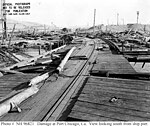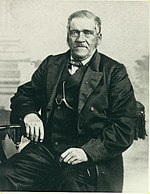Port Chicago Naval Magazine National Memorial

The Port Chicago Naval Magazine National Memorial is a memorial dedicated in 1994 recognizing the dead of the Port Chicago disaster, and the critical role played by Port Chicago, California during World War II, in serving as the main facility for the Pacific Theater of Operations. The national memorial is located at the Concord Naval Weapons Station near Concord, California, in the United States. The 1944 Port Chicago disaster occurred at the naval magazine and resulted in the largest domestic loss of life during World War II. A total of 320 sailors and civilians were instantly killed on July 17, 1944, when the ships they were loading with ammunition and bombs exploded. The majority of the deaths were African American sailors working for the racially segregated military. The explosion and its aftermath led to the largest Naval mutiny in US history, and it and the subsequent trial became major catalysts for the United States Navy to desegregate following the war.
Excerpt from the Wikipedia article Port Chicago Naval Magazine National Memorial (License: CC BY-SA 3.0, Authors, Images).Port Chicago Naval Magazine National Memorial
Kinney Boulevard,
Geographical coordinates (GPS) Address Website External links Nearby Places Show on map
Geographical coordinates (GPS)
| Latitude | Longitude |
|---|---|
| N 38.0575 ° | E -122.02972222222 ° |
Address
Port Chicago Naval Magazine National Memorial
Kinney Boulevard
California, United States
Open on Google Maps








